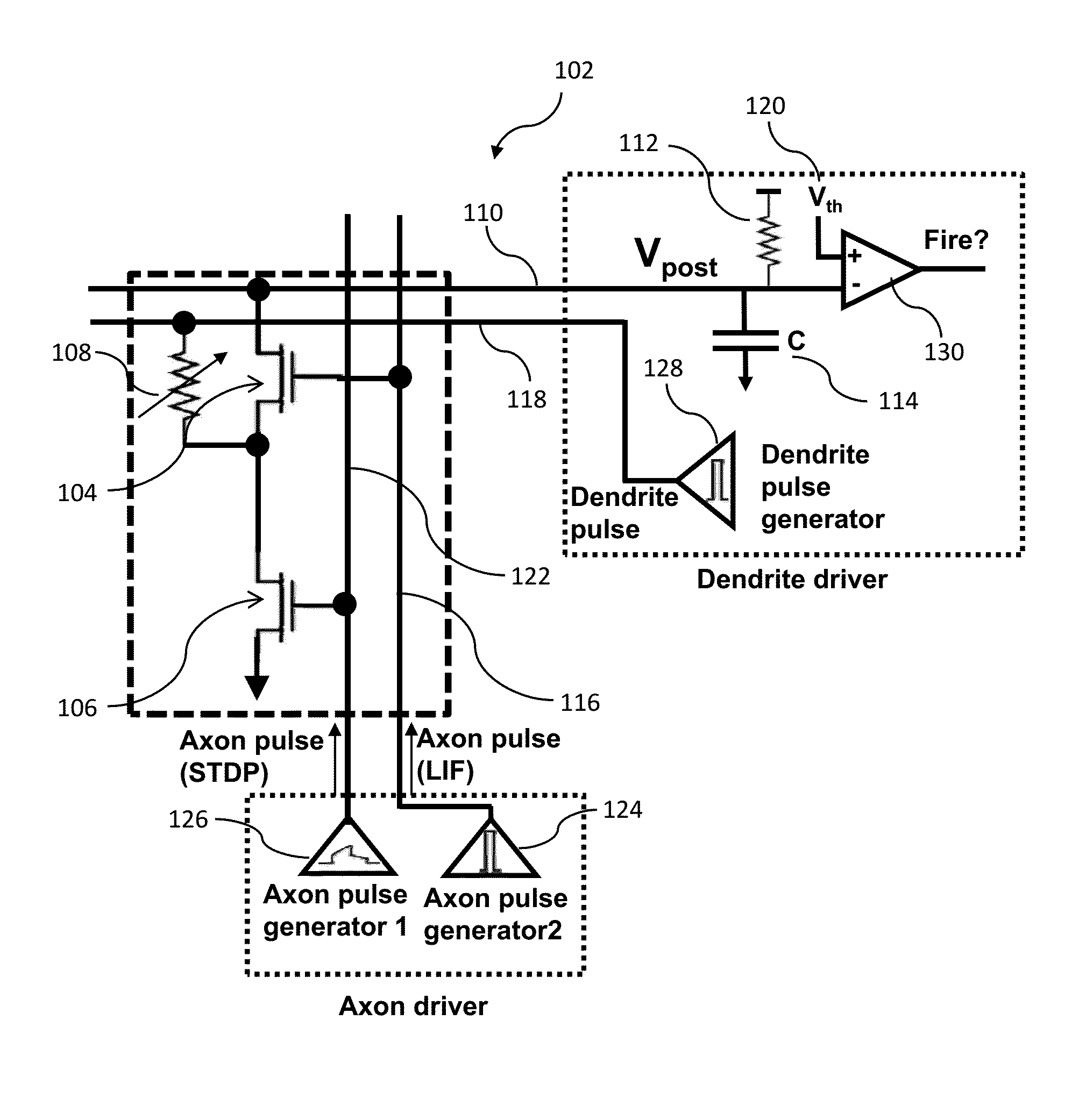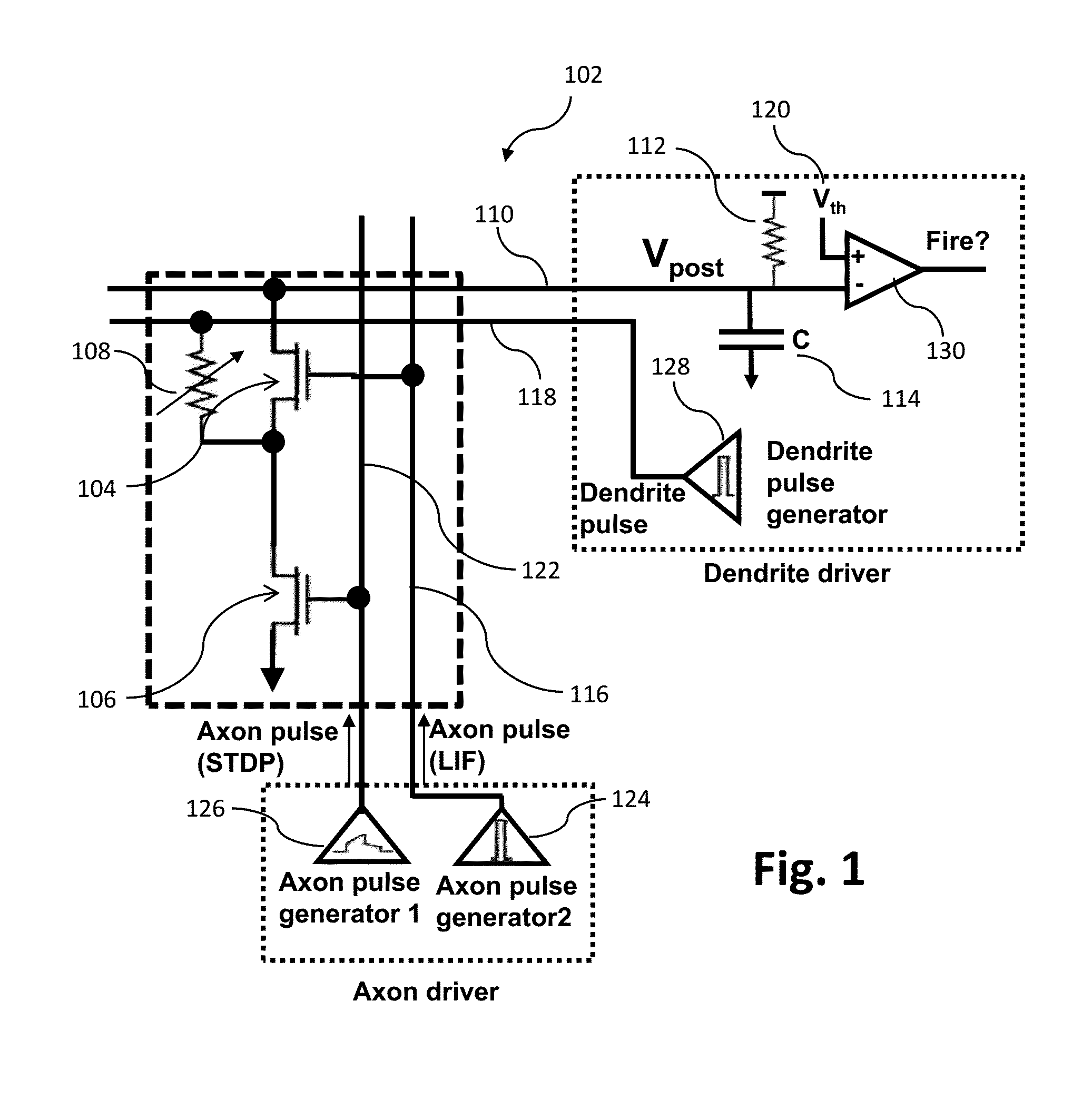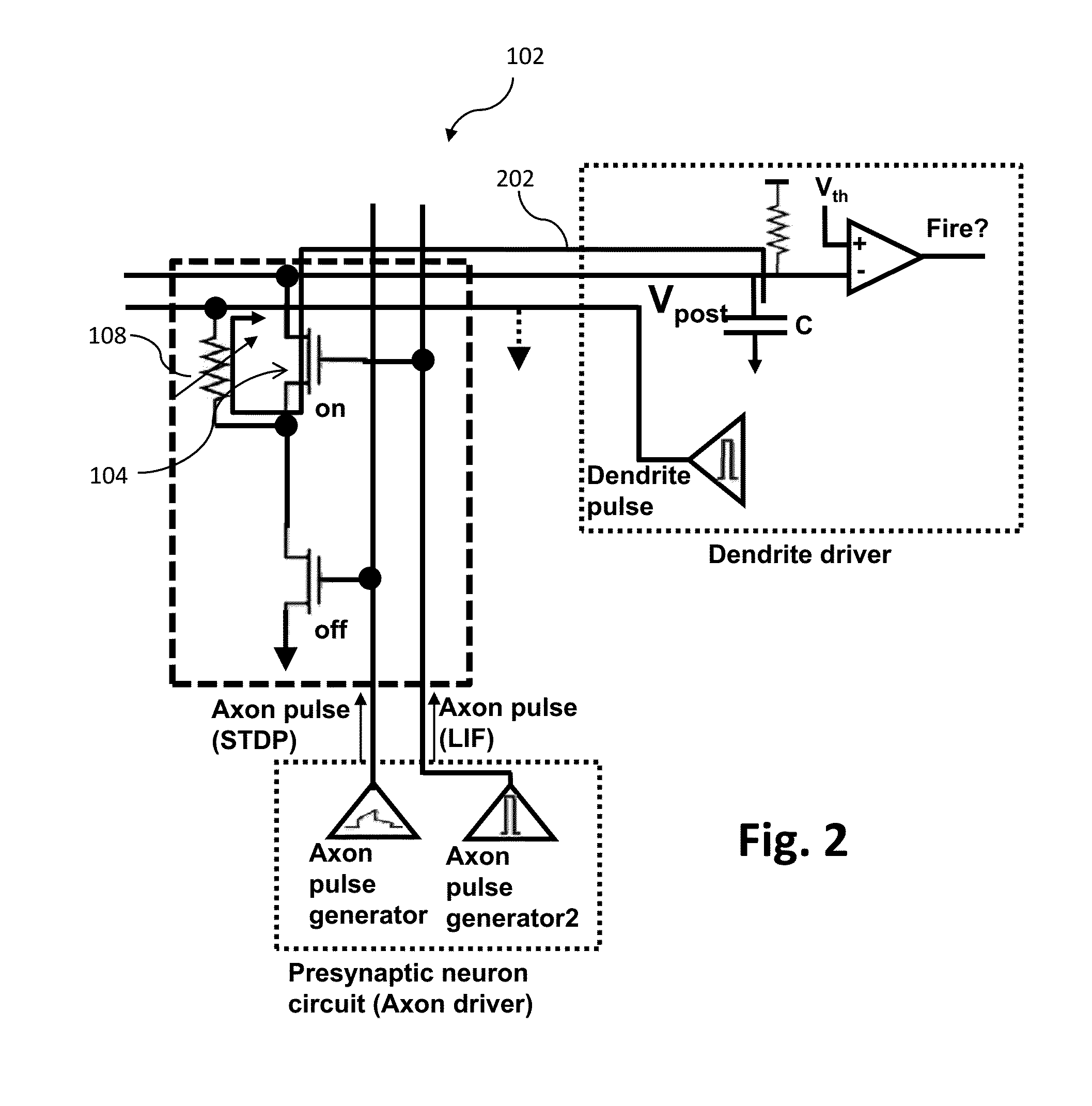Neuromorphic memory circuit
a memory circuit and neuromorphic technology, applied in the field of memory circuits, can solve the problem that the neuromorphic system generally does not utilize a traditional digital model
- Summary
- Abstract
- Description
- Claims
- Application Information
AI Technical Summary
Benefits of technology
Problems solved by technology
Method used
Image
Examples
Embodiment Construction
[0017]The present invention is described with reference to embodiments of the invention. Throughout the description of the invention reference is made to FIGS. 1-8B. When referring to the figures, like structures and elements shown throughout are indicated with like reference numerals.
[0018]A neuron behavior model may include a presynaptic neuron connected to a postsynaptic neuron via a synapse. The following variables can be defined:
[0019]Vpre(t) is a membrane potential of presynaptic neuron (as a function of time).
[0020]Vpost(t) is a membrane potential of postsynaptic neuron (as a function of time).
[0021]w is a synaptic weight. Synaptic weight is the influence that a pre-synaptic firing will have on post-synaptic neuron. Synaptic weights are plastic or adaptive, and change through time. Synaptic weight exhibits two forms of plasticity: (a) long-term and (b) short-term. Long-term changes in the transmission properties of synapses provide a physiological substrate for learning and m...
PUM
 Login to View More
Login to View More Abstract
Description
Claims
Application Information
 Login to View More
Login to View More - R&D
- Intellectual Property
- Life Sciences
- Materials
- Tech Scout
- Unparalleled Data Quality
- Higher Quality Content
- 60% Fewer Hallucinations
Browse by: Latest US Patents, China's latest patents, Technical Efficacy Thesaurus, Application Domain, Technology Topic, Popular Technical Reports.
© 2025 PatSnap. All rights reserved.Legal|Privacy policy|Modern Slavery Act Transparency Statement|Sitemap|About US| Contact US: help@patsnap.com



